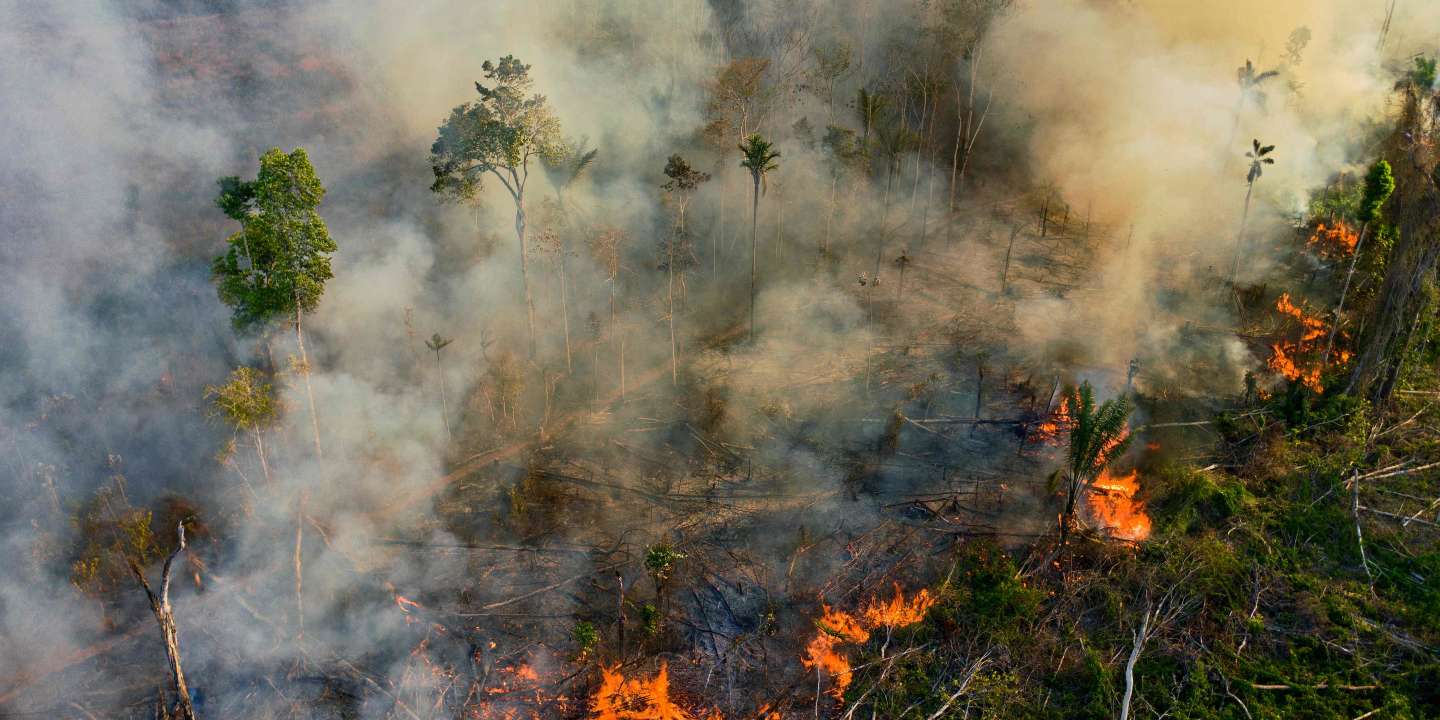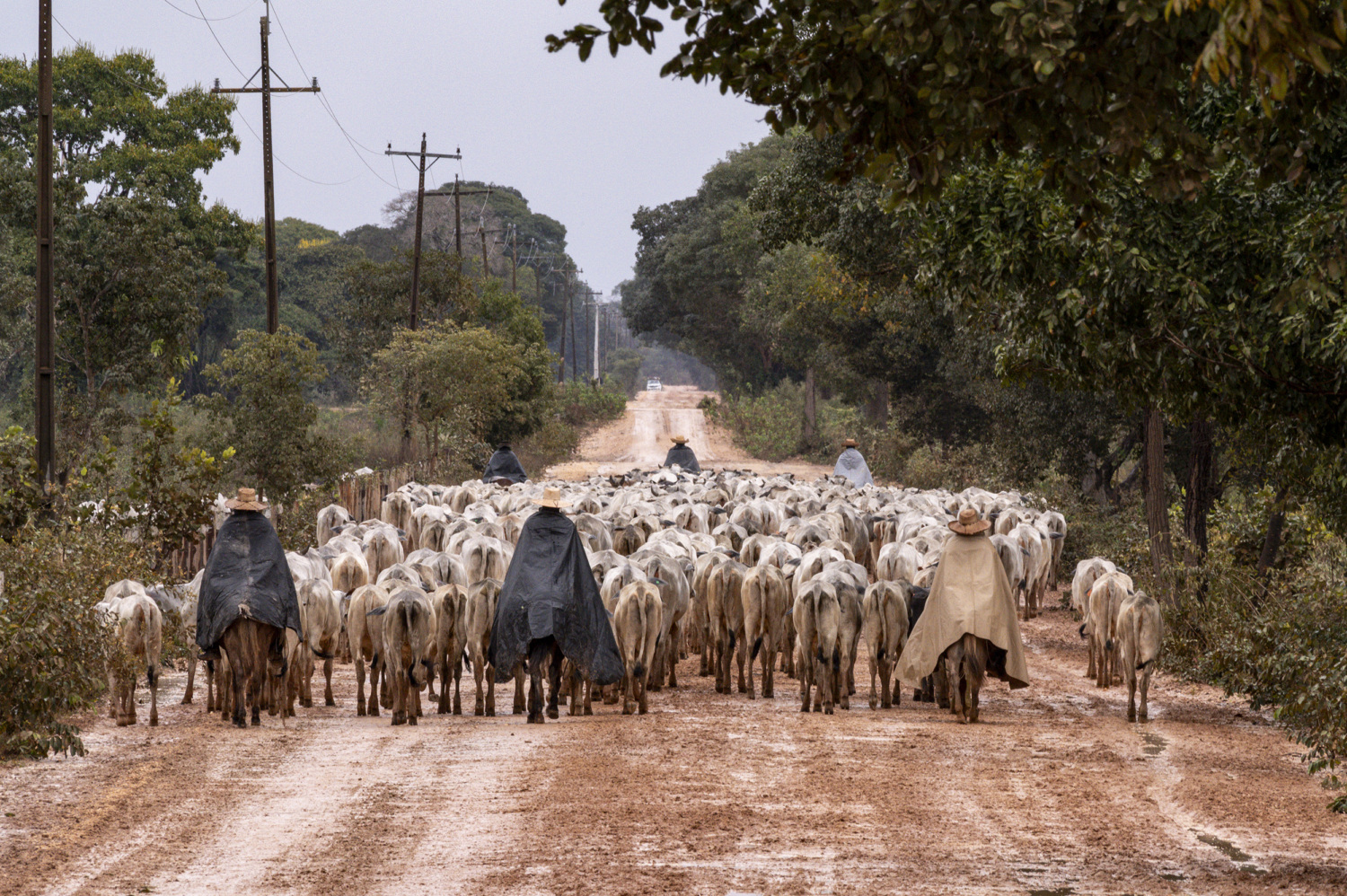
Extreme drought, climate change and criminality drive explosion of fires in Brazil
While overall deforestation rates are falling, forest fires are currently exploding in the Amazon, Cerrado and the Pantanal. Some 60% of the Brazilian territory is now covered by dense smoke and soot, which has already reached other countries in South America, writes Mighty Earth Brazil Senior Director, João Gonçalves.
A huge cloud of thick smoke covers almost all of Brazil. The colors of the mega-biodiverse country that, among other ecosystems, is home to the world’s largest rainforest have given way to gray smoke, and acrid soot. As a resident of São Paulo, the largest Brazilian city, I can’t remember the last time I saw the sky. Unbelievably, this scenario is the same in about 60% of the Brazilian territory.
The situation that led São Paulo and its metropolitan region, according to the IQAir website, to register, earlier this week, the worst air quality among all the world’s metropolises is the result of a combination of climate change impacts and criminal forest burning for land clearance and occupation. At the same time, more than half of Brazil is also suffering the direct impact of the climate crisis, facing our worst drought in the last 44 years. When it comes to fires, the country is about to surpass an astonishing 160,000 fire outbreaks in 2024 – a number 104% higher compared to last year, in which almost 78,000 outbreaks were registered.
According to Cemaden (the National Center for Monitoring and Warning of Natural Disasters), a total of 1,995 Brazilian cities are in a situation of extreme drought, and more than 1,300 municipalities are facing severe drought conditions. It is the first time that a deficit of rainfall has been observed for such a long time, regular rains are expected just for mid-October, in such an extensive area of Brazil – conditions which drives the spread of fires. The fires that spread through practically all Brazilian ecosystems, with the Amazon, the Cerrado and the Pantanal being the most affected, are caused by human action in 90% of the cases.
According to MapBiomas, over 5.7 million hectares were burned in August alone, a 149% increase compared to August 2023. Since January, the total burned area has reached 11.39 million hectares – 6 million hectares more than the same period last year, representing a 116% rise. Mato Grosso, Pará, Amazonas and Tocantins, all states in the Legal Amazon, lead the fires. In Mato Grosso, for example, the increase in fires jumped 646%, from 1,400 last year to almost 10,700 this year.
The explosion of fires, as well as coincidences in the burned areas, raises suspicions of criminal and orchestrated acts. In the state of São Paulo, for example, according to information from IPAM (Amazon Environmental Research Institute) 2,600 hot spots were registered between August 22 and 24th, 81% of which were concentrated in areas of agricultural use. The analysis also shows the appearance of columns of smoke in the state in a short interval of 90 minutes, raising even more suspicions about criminal acts.
For the Ministry of the Environment and Climate Change, and other experts on the subject, the explosion of fires in Brazil may signal be a new strategy for the felling of the rainforest and subsequent illegal occupation. Traditional deforestation, which deforests large areas at once, would be giving way to more gradual forest degradation, making the forest vulnerable until its total death. This slower process goes much more unnoticed by the satellites in the sky that monitor the more detectable clear cutting of the forest.
Proof of this is that according to INPE (the National Institute for Special Research), between August 2023 and July this year, the degradation of the Amazon by fires was six times greater than deforestation. Degradation grew by 44.7%, while deforestation fell by 45.7%, compared to the previous 12 months. According to the President of IBAMA (Brazilian Institute of the Environment and Renewable Natural Resources), Rodrigo Agostinho, in an interview with Agência Pública, the association between logging, followed by fire and later the planting of pasture inside the degraded forest, seems to be a new strategy for occupying the territory.
Unlike traditional deforestation, the perpetrator of a crime like this is much more difficult to prove. Although causing a forest fire is a crime in Brazil, with a penalty of 2 to 4 years in prison, it is very difficult to prove who started the fire. In general, people claim that it started naturally. In addition, the fire quickly spreads from one property to another, making it difficult to identify its origin. And to complicate matters further, controlled burning is recognized as an “agricultural management technique” in Brazil.
The strategy of forest devastation may even be changing, after all, criminal actions need to adapt to continue and escape command and control actions, but what does not change is their motivation. The forest continues to be cut down to satisfy the world’s demand for cheap protein, especially beef and soy, the latter which is predominantly used as animal feed for pigs, poultry and cattle. The conversion of forests to pastures and plantations, as well as methane emissions released by cows, contributes significantly to the environmental footprint of the global food industry. Beef and soy production is responsible for 70% of deforestation and habitat loss in Brazil’s Amazon and Cerrado and decimates other climate-critical ecosystems. The responsibility for this destruction and pollution is highly concentrated in large global companies, such as JBS, Marfrig, Cargill, Minerva and Bunge.
While we continue to burn our forests, the smoke and soot from the fires in the Amazon use the “flying rivers” – air masses that carry steam from the Amazon to other regions and regulate rainfall and climate on the continent – to reach southern Brazil. The remnants of the fires are also spreading to other South American countries. In the coming days the smoke is expected to reach Argentina and Uruguay with more intensity, of which the capital Montevideo is more than 5,000 kilometers away from Manaus, in the heart of the Brazilian Amazon, which is also covered by dense smoke from the fires.
